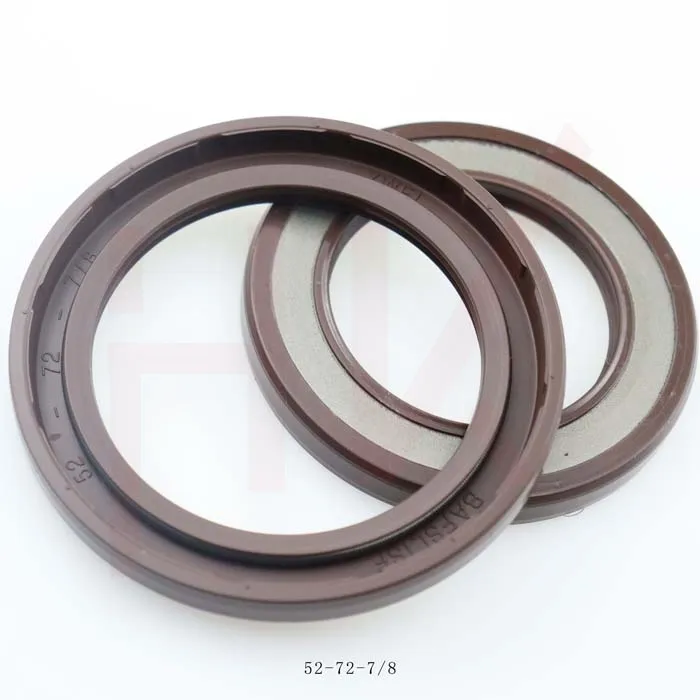តុលា . 18, 2024 14:37 Back to list
Optimizing Performance with Metric Rod Wiper Technology for Enhanced Efficiency
The Importance of Metric Rod Wipers in Industrial Applications
In the realm of industrial machinery and automation, the importance of effective sealing and wiping solutions cannot be overstated. One such essential component is the metric rod wiper, a device crucial for ensuring the longevity and efficient operation of hydraulic and pneumatic systems. Designed to prevent contaminants from entering the system while effectively clearing debris from the rod during extension and retraction, metric rod wipers are widely used in various applications.
Functionality of Metric Rod Wipers
At the heart of their functionality, metric rod wipers play a critical role in protecting the internal parts of hydraulic cylinders from dirt, dust, and other contaminants. The design of a rod wiper typically consists of a flexible, durable material that conforms to the rod's surface. As the rod moves in and out of the cylinder, the wiper makes contact, scraping away any particles that may cling to the surface. This action not only helps maintain the cleanliness of the hydraulic fluid but also extends the lifespan of the seals within the cylinder, reducing maintenance costs and downtime.
The wipers are dimensioned according to the metric system, allowing them to fit seamlessly into systems designed with international standards in mind. This uniformity is particularly beneficial in global markets where different manufacturers utilize the metric system for engineering and manufacturing.
Material Considerations
When selecting a metric rod wiper, the choice of materials is of paramount importance. Common materials include polyurethane, neoprene, and rubber, each offering unique properties suitable for varying environmental conditions. For example, polyurethane wipers are known for their excellent abrasion resistance and chemical stability, making them ideal for applications involving harsh chemicals or extreme temperature fluctuations. On the other hand, neoprene may be chosen for its flexibility and ability to withstand oil and ozone exposure.
metric rod wiper

Moreover, the hardness of the material is another critical factor. Harder wipers provide better wear resistance, while softer variants may offer improved sealing capabilities. This choice largely depends on the specific application requirements, including rod size, operating pressures, and environmental conditions.
Design and Customization
Metric rod wipers come in various designs, each tailored to specific applications and user needs. Standard designs include single-lip and double-lip configurations, which differ in their sealing efficiency and debris-extraction capabilities. Advanced designs may incorporate features like integrated dirt scrapers or special grooves to enhance performance further.
Customization is also a significant advantage of metric rod wipers. Manufacturers often provide options for bespoke sizes, shapes, and materials, allowing engineers to select the perfect wiper for their specific application. This flexibility ensures optimum performance and protection in diverse environments, from simple industrial settings to complex aerospace applications.
Conclusion
In conclusion, metric rod wipers are indispensable components that contribute significantly to the reliability and efficiency of hydraulic and pneumatic systems. Their primary role in shielding internal components from contamination cannot be overstated, as it directly impacts the longevity and performance of the equipment. With a range of material options, designs, and customizability, these wipers provide the versatility necessary to meet a variety of industrial demands.
Investing in high-quality metric rod wipers will not only enhance the operational efficiency of machinery but also reduce maintenance requirements and prolong the life of essential equipment. As industries continue to advance, the role of metric rod wipers in ensuring seamless operation will undoubtedly remain vital. Understanding their functions and investing in the right solutions can make a significant difference in overall operational success.
-
TCN Oil Seal Metal Ring Reinforcement for Heavy Machinery
NewsJul.25,2025
-
Rotary Lip Seal Spring-Loaded Design for High-Speed Applications
NewsJul.25,2025
-
Hydraulic Cylinder Seals Polyurethane Material for High-Impact Jobs
NewsJul.25,2025
-
High Pressure Oil Seal Polyurethane Coating Wear Resistance
NewsJul.25,2025
-
Dust Proof Seal Double Lip Design for Construction Equipment
NewsJul.25,2025
-
Hub Seal Polyurethane Wear Resistance in Agricultural Vehicles
NewsJul.25,2025
-
The Trans-formative Journey of Wheel Hub Oil Seals
NewsJun.06,2025
Products categories
















